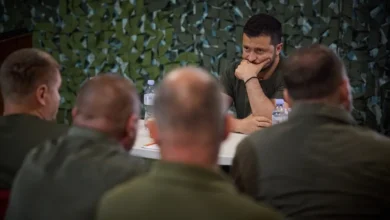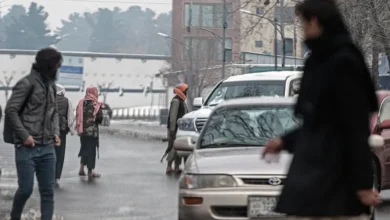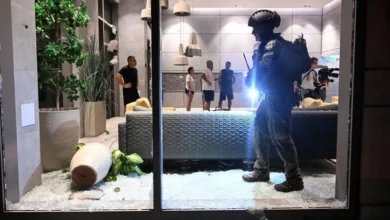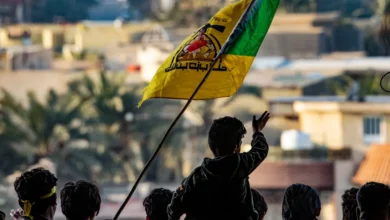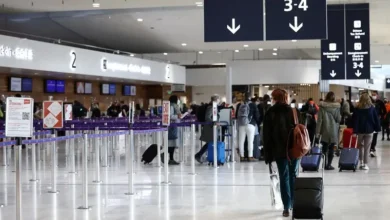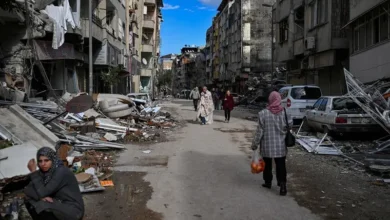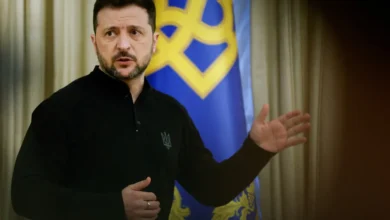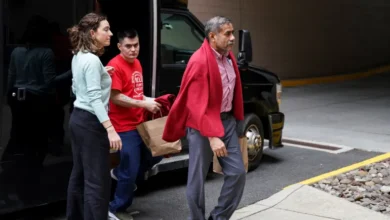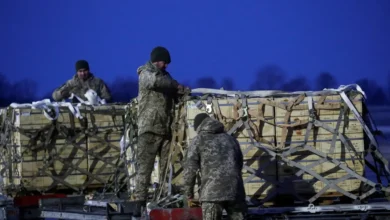‘Want to go home’: Nepalis fighting for Russia in Ukraine describe horrors
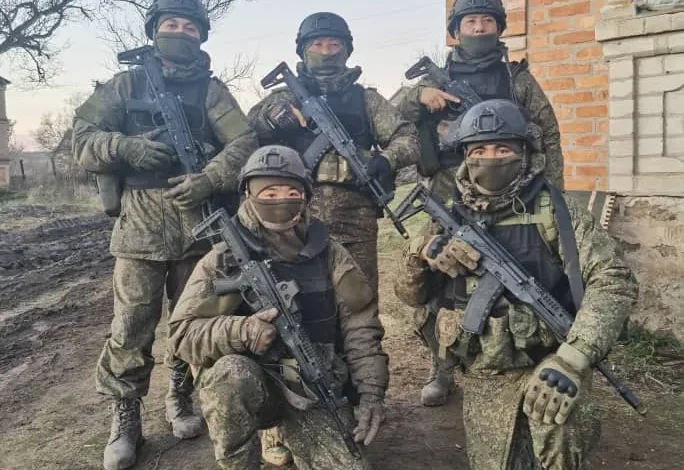
On a bitterly cold morning in early January, somewhere near Tokmak city in Ukraine’s Zaporizhzhia region, Bimal Bhandari* began a risky journey to desert the Russian army he had been serving with. The 32-year-old Nepali national was with another compatriot who also was fighting for the Kremlin, in and against Ukraine.
The two men knew that getting away from the Russians would be a dangerous task, but they concluded that the risk was worth it, when weighed against their chances of survival as soldiers in Moscow’s savage war.
Bhandari was in touch with a Nepali agent in Russia through a relative. The agent and another people smuggler promised that they could design an escape plan: For $3000 each, the two Nepali soldiers would be out. Three days after Bhandari and his friend shared their location, a man who spoke Hindi came with a driver and vehicle at the crack of dawn, picked them up and dropped them at an unknown spot that the traffickers claimed was near the Russian-Ukraine border.
The man who spoke Hindi told them that handlers would be waiting to help them once they crossed over to the “other side”. So Bhandari and his friend stomped through knee-deep snow in minus 19 degrees Celsius (minus 2.2 degrees Fahrenheit) temperature for 17km (11 miles) in about seven hours. Famished and cold at the end of that journey, they called the traffickers again – only to be told to wait for 40 minutes for someone to pick them up.
It was three hours before a vehicle arrived. There were no rescuers inside. Instead, it had a Russian border patrol team that handcuffed them and took them in the vehicle. They were jailed for a day, their passports seized before Bhandari was taken to a health facility, suffering from hypothermia.
“It was our one and only chance to escape this brutal war and we failed,” he told Al Jazeera, from his hospital bed. “I do not want to recover – as soon as I get better, I’ll be pushed to the front line.”
It is a fear that’s gripping dozens, if not hundreds, of Nepali families. While Nepal’s government does not have exact numbers of the country’s nationals fighting as mercenaries for Russia, some analysts believe they may total as many as one thousand. At least 12 Nepalis have been killed in the fighting, and five others captured by Ukraine.
Nepal’s government is negotiating with Russia diplomatically for the repatriation of its citizens and the bodies of the deceased, the families of civilian-turned-mercenaries are losing patience. On Tuesday, the families demonstrated outside the Russian embassy in Kathmandu, demanding that their relatives be sent back, dead bodies be repatriated, fresh recruitments be halted and compensation be offered for those killed in combat.
It’s a far cry from the hope and promise of a life in Europe that first drew many of the recruits to Moscow’s side.
‘A good breakthrough’
Atit Chettri, a 25-year-old from Surkhet in western Nepal, had dreamed of a life in Europe. He had his eyes set on Portugal. But he had no pathway to the continent – until last October when he saw a TikTok video about Nepalis being recruited for the Russian army and posted an inquiry message.
Within a few minutes, he got a direct message from an agent with contact details. The agent asked for $9,000 and promised a salary of around $3,000 a month, along with perks and bonuses, and Russian citizenship for him and later for his family.
For Chettri, who was unemployed, this looked like a ticket to a better life. He accepted the offer. Four days later, he had a Russian tourist visa and a ticket to Moscow via Dubai booked for October 21, 2023.
It was Chettri’s first flight to a foreign land. “The agent had asked me to call him if I had problems at the immigration. The immigration authority stopped me for a while, but let go immediately after I called my agent,” Chettri told Al Jazeera from Ostrykivka, also a village near Tokmak.
Bhandari, who was offered a similar deal, flew to Russia on October 19. He had lived in Kuwait for six years previously but never managed to save enough to lift his family out of poverty. What he earned went into repaying interest on loans he had taken to get to Kuwait.
Frustrated, he had returned to Nepal and was working as a tipper truck driver when the chance to fight for Russia came along. “My family’s economic condition is miserable so I thought this would be a good breakthrough” said Bhandari.
He also connected with the traffickers via TikTok. They ran a travel agency in front of the Russian embassy in Kathmandu. On his way to Moscow via Dubai, Bhandari said he met close to 30 Nepalis waiting to board the plane to join the Russian army – some were travelling from Kathmandu, while others were Nepali migrant workers already in the Middle East.
When he landed in Moscow he was received by a local agent, also Nepali. “I was directed by the Kathmandu agent to give him $1,200 upon arrival. He took me to the toilet at the airport, and I gave him the money,” said Bhandari. He was then dropped at a recruitment camp where he signed a one-year contract to fight as a soldier.
Like Bhandari, 36-year-old Bharat Shah could not resist the offer. In Nepal, he worked as a traffic policeman before leaving for Dubai, where he earned 2,400 dirhams ($650) a month. So when agents offered $3,000 a month fighting for Russia, he agreed.
“I told him many times not to go to Russia. He said it was a great opportunity to make more money and later settle there with his family”, his father Kul Bahadur Shah told Al Jazeera over the phone from Kailali, in western Nepal.
Initially, that “opportunity” appeared to be paying off. Shah sent 250,000 Nepali rupees (around $1,900) back, after going to Russia.
But he was killed in battle on November 26. At home, his wife must now singlehandedly take care of their four-year-old son and a two-month-old daughter whom he never saw.
‘We were like their shield’
Recruits say they received hardly any training before being sent to fight. While the traffickers had assured these civilians of a full-fledged, three-month-long training programme, they received less than a month of combat drills in the Rostov region in southwestern Russia bordering Ukraine. “I had only seen a gun from a distance, I had never held it before,” Chettri told Al Jazeera.
Another soldier, 34-year-old Ratna Karki*, was injured in battle and is currently in hospital. According to Karki, officers in his unit mostly send Nepali, Tajik and Afghan fighters to the front line. “The Russians just commanded us from behind. We were like their shield,” he told Al Jazeera over the phone.
Before Bhandari was deployed to his battalion, he thought he was part of a backup force for the Russians as he did not have any war skills. “They [Russian commanders] even make us go and inspect enemy grounds which is very scary,” said Bhandari. “I have killed so many, or else they would kill me,” he said.
“We have to be on standby, it could be anytime during the night or day. When they command, we need to go to the battleground,” said Chettri. “Some days we have to spend the entire night in a bunker.”
Unlike Bhandari, who was detained during his attempted escape, Ram Chandra Shrestha was fortunate enough to get away.
Shrestha, an ex-Nepal Army soldier, and three of his friends paid $2,000 each to human traffickers to get out from Ukraine and cross the border to Russia. He then reached Moscow and travelled to Kathmandu via New Delhi in December. “Many more have tried to escape, but have failed. Now the Russians have also tightened their vigilance, hence it is very difficult to flee,” Shrestha told Al Jazeera.

